Mobile Trends & Insights
Ken Baldauf
Software Engineer @ Acorns
Organizer @ OC Android
- Android vs iOS
- Cross platform development
- Instant Apps/App Clips
- Biometric technology
- AR/VR
- IoT & Wearables
Android vs iOS Overview
- Android
- Android Inc. founded in October 2003
- Originally targeted as OS for digital cameras
- Bought by Google in July 2005
- Launched in September 2008
- Latest: Android 11 (September 2020)
- Native apps written in Kotlin & Java
- Android Inc. founded in October 2003
- iOS
- Owned by Apple; internal development began in 2005
- Launched in June 2007
- Latest: iOS 14 (September 2020)
- Native apps written in Swift & Objective-C
US Market Share
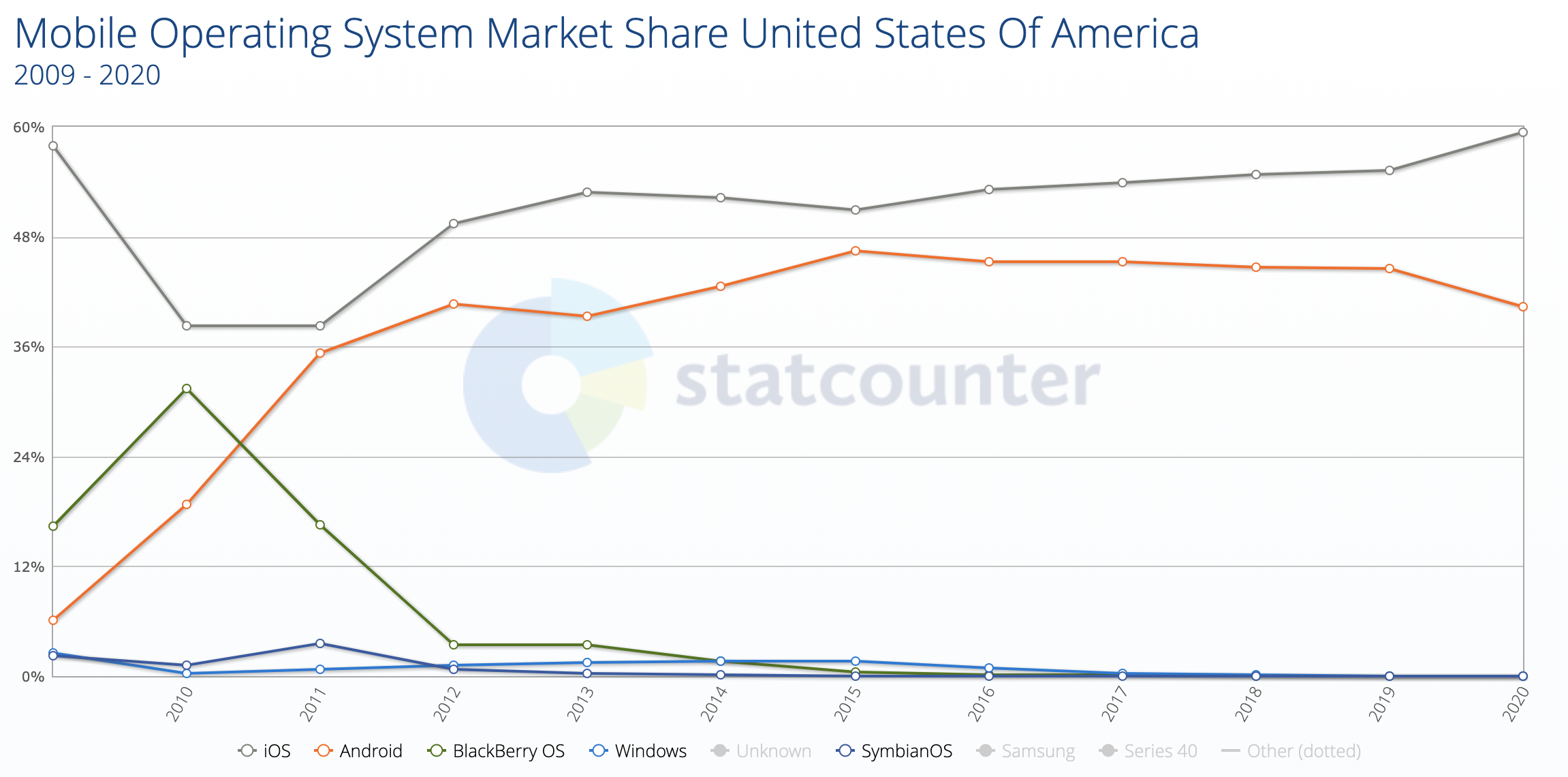
Global Market Share
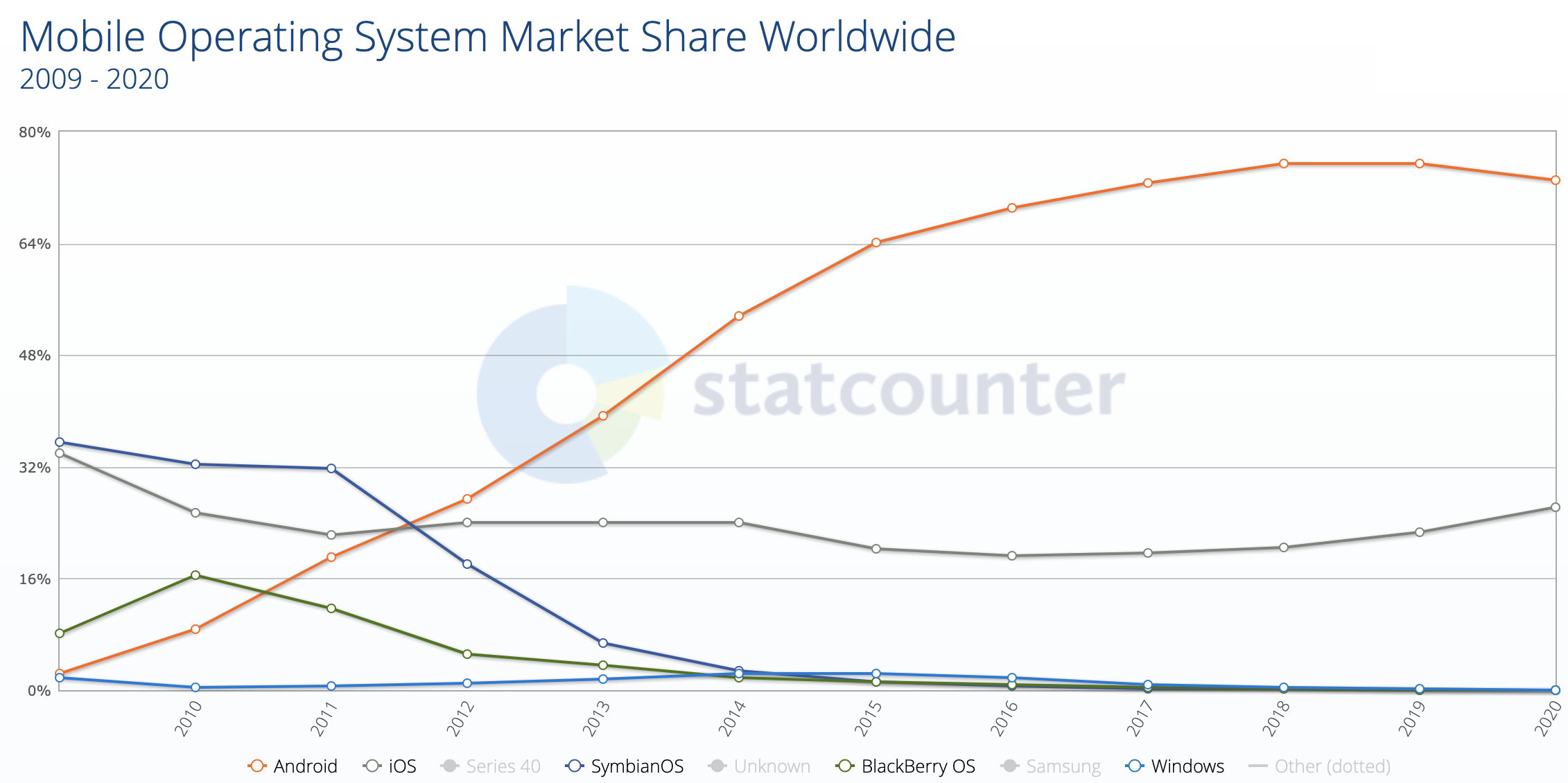
Android: Free vs Paid Apps
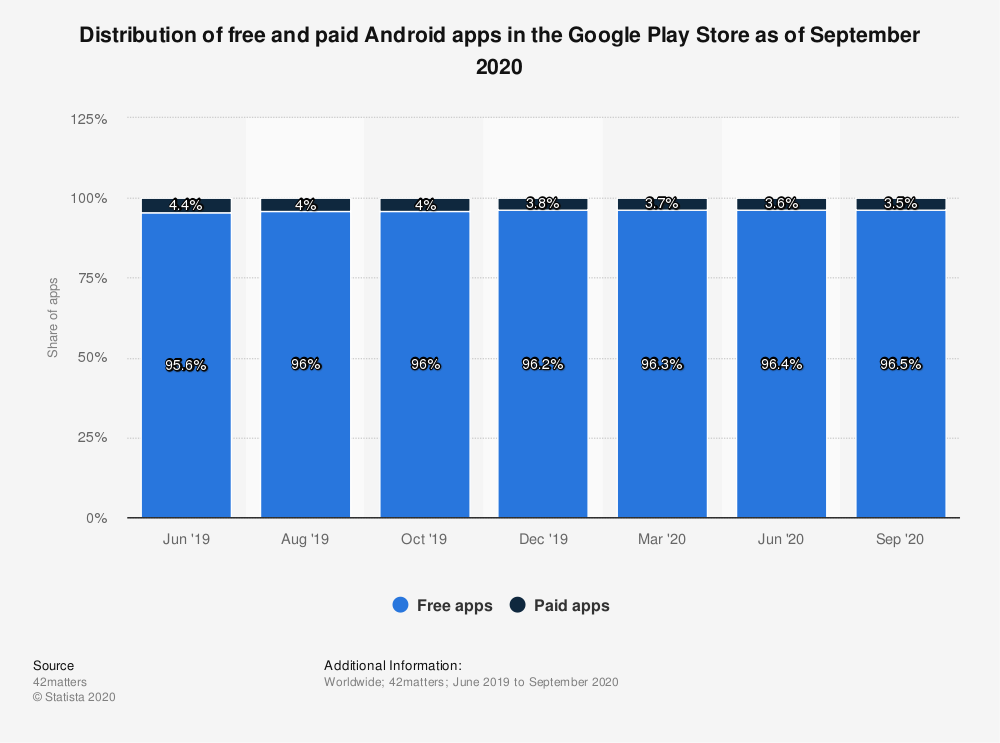
iOS: Free vs Paid Apps
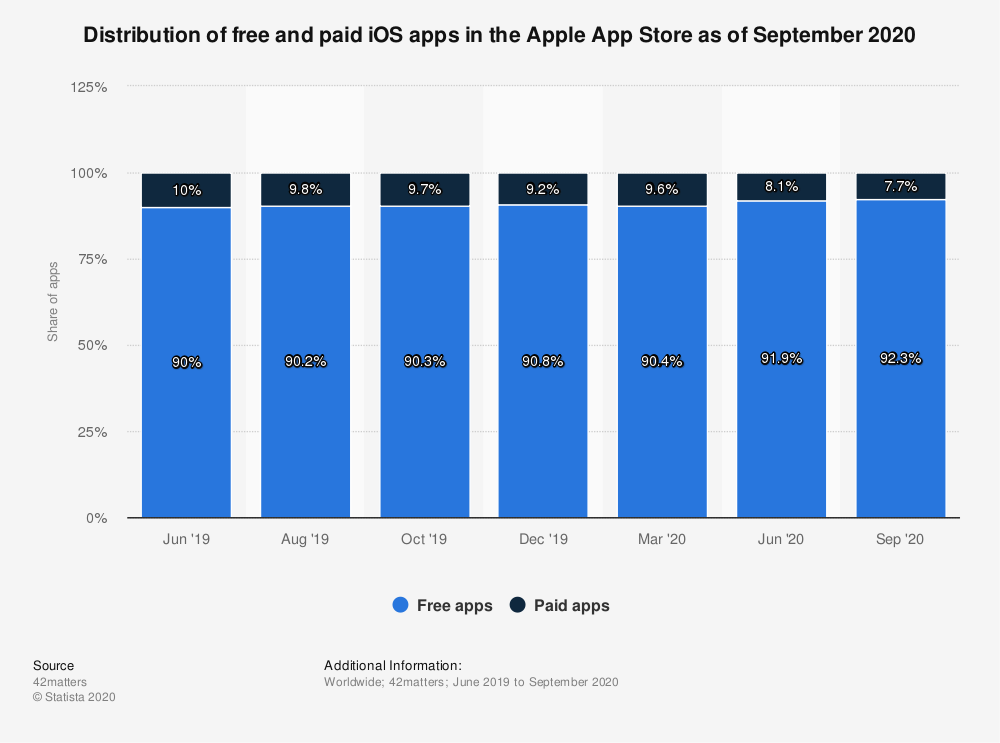
Cross Platform Development
- Shared codebase across Android & iOS
- Pros
- Can reduce development time and/or cost
- Enforces consistency across platforms
- Can reduce barriers in terms of language expertise
- Cons
- Difficult to build complex UIs
- Reduced code performance
- Slow adoption of new platform features
- Potentially less developer tooling
Cross Platform Types
- Legacy
- Apache Cordova, PhoneGap & Ionic
- Xamarin
- React Native
- Developed by Facebook
- Uses Javascript with React framework
- Flutter
- Developed by Google
- Written in Dart
- Kotlin Multiplatform
- Developed by JetBrains
- Business logic only; can't be used for UI
Cross Platform Statistics
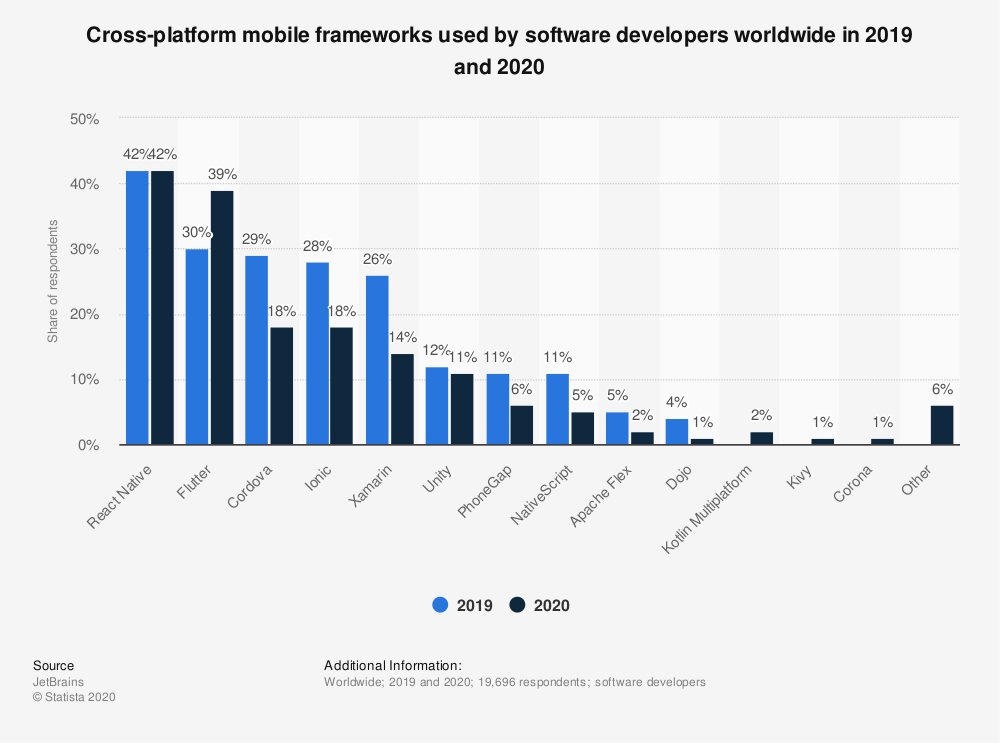
Instant Apps/App Clips
- Concept
- Mini apps ran without installation
- Offer limited subset of a standard app's functionality
- Native UX instead of dealing with mobile website
- Work well with Apple/Google sign in + digital wallet
- Option to download app for full functionality
- Instant Apps
- Android
- Announced in 2016; launched in 2017
- App Clips
- iOS
- Announced/Launched in 2020
Instant Apps/App Clips Usage
- User opens a link on their phone
- Full app opens if it is installed on the phone
- Mini app streamed to device if link supports it
- Fallback to opening link in browser if all else fails
- Example: Mobile parking payment
- Scan QR code on parking sign
- Launches native app experience
- Enter parking space number
- Decide how many hours of parking
- Launch Apple or Google Pay to process payment
- Example: One level demo of game
Biometrics
- History
- First fingerprint sensor: Motorola Atrix (2011)
- Touch ID with iPhone 5s (2013)
- Iris Unlock with Samsung Galaxy Note 7 (2016)
- Face ID with iPhone X (2017)
- Face vs Fingerprint
- Face unlock is generally faster
- Fingerprint unlock is less battery intensive
- Security is still up for debate
- Global mobile biometrics market
- Projected growth of $15.63 billion from 2020-2024
- According to market research company, TechNavio
AR/VR
- Augmented Reality
- Adds digital elements to live view of the world
- Often done with smartphone camera
- Examples
- Google Glass
- Face filters: Snapchat & Instagram
- Games: Pokemon Go
- Virtual Reality
- Complete immersive virtual experience
- Shuts out physical world
- Can cause motion sickness
- Types: standalone, phone powered & pc powered
Future of AR/VR
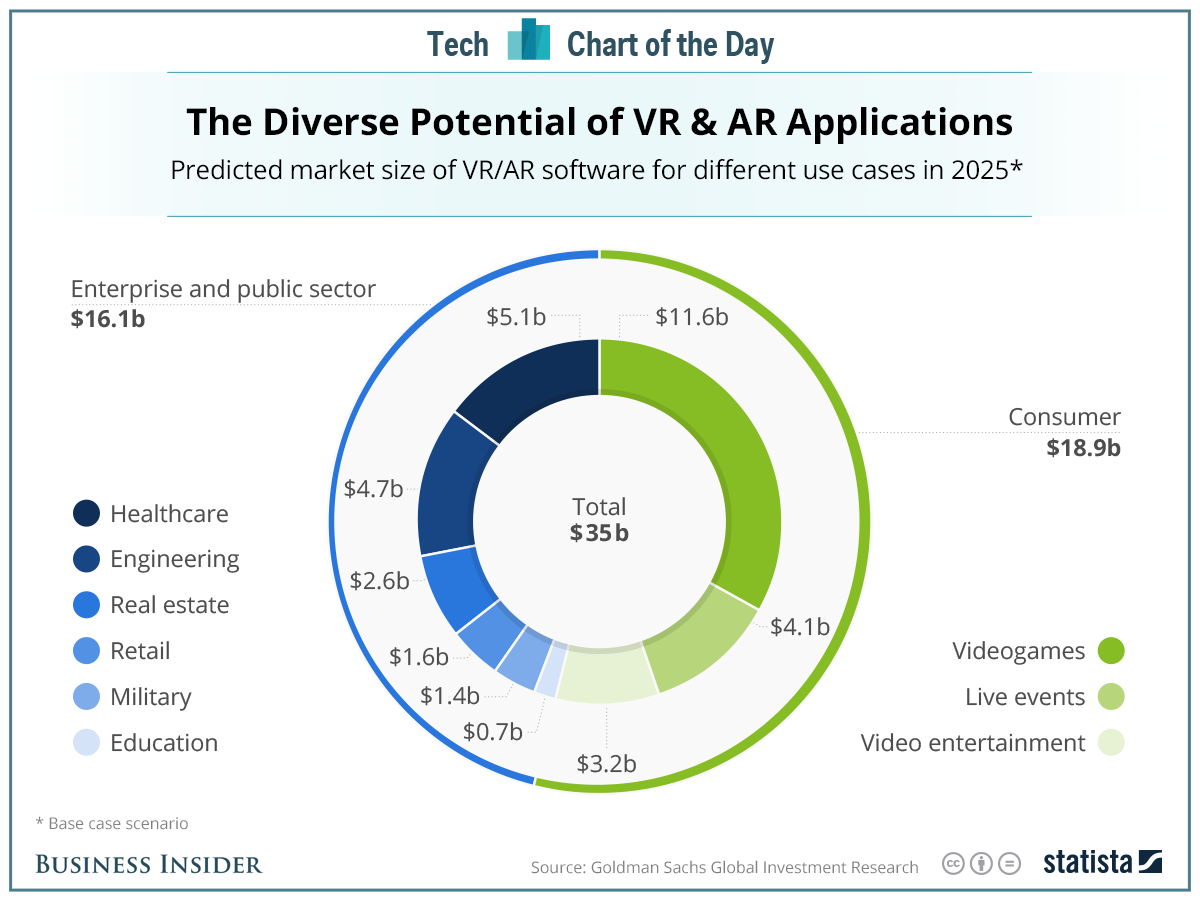
IoT Sales

Wearable Shipments
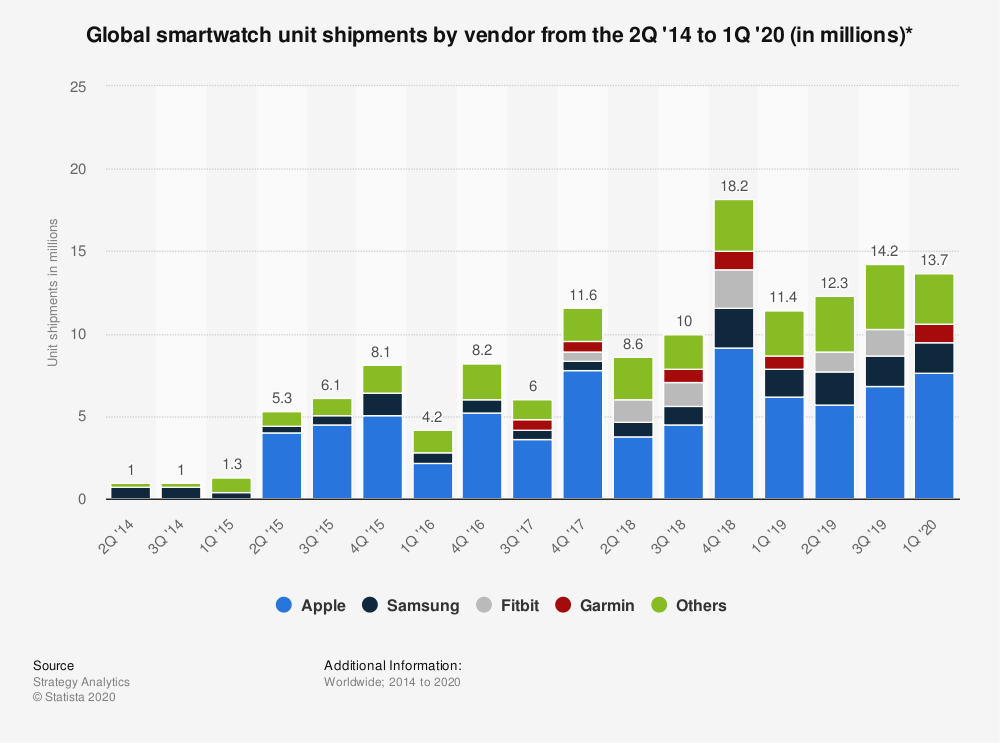
Recap
- iOS still on top in US; Android is king globally
- Hard to make money from app store outside of games
- Most popular apps are a mechanism for getting a product to a user base
- Look for Instant Apps/App Clips to simplify the mobile web experience.
- Native apps still dominate the marketplace
- But cross platform solutions keep getting better
- Biometrics, wearables & IoT will continue to improve the link between our phones and the world around us.
- AR/VR is the hardest to predict, but has the most potential for revolutionary changes.